|
|
Post by okla on Mar 14, 2012 7:56:45 GMT 8
Hey Phantom...It boggles my mind that the Japs would want this type propaganda photo floating around for the rest of the world to view. Hardly a pic that might invoke sympathy for their cause. Maybe viewed otherwise with their entirely different mind set, but I just can't fathom a photo like this as being of any earthly use as propaganda. If the photo is "on the level", having been taken by an individual Japanese soldier, undoubtedly an officer, I seriously doubt it would have been purchased by any Nipponese publication of the time due to severe censorship conditions of the day. I just have to consider it a phony, propaganda shot by our enemy, whose view of things was so diametrically opposed to that of their American and Filipino foe. Maybe it could be better understood if we harken back to the 1937 Rape of Nanking and the fact that the "Great Humanitarian", Adolph Hitler was aghast at the reports from the German Ambassador dealing the ongoing atrocities. Hitler, it was reported, didn't believe that his future ally could be guilty of such crimes against humanity. This was, of course, 5 years, prior to the "final solution". In 1942 the Amer/Fil forces were dealing with a "different breed of cat". I guess this sums up my view of why such a photo, whether real or staged would even exist. Once again, I request all who read this rant to please cut me some slack. This subject has always been a "sore spot" with me.   |
|
|
|
Post by Karl Welteke on Mar 14, 2012 20:25:15 GMT 8
What happened to the cement cross the American POWs built in 1942 in Camp O‘Donnell? This is the way it looked in 1971. 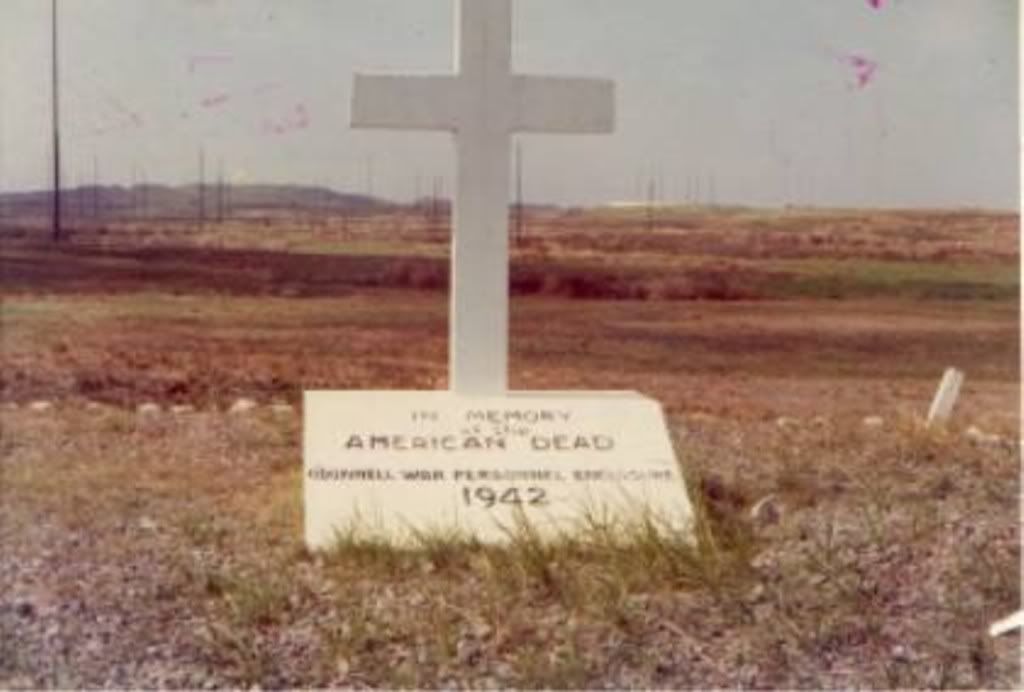 This image came from the US Subic Bay Marine Barracks 1971 web pages and it seems to be the original Memorial the American Prisoners built. The masts in back seem to belong to an antenna field. In this thread there was some speculation about this or people didn’t know. Here is a web page from the Andersonville National Historic site on the subject: www.nps.gov/ande/historyculture/sackofcementcross.htmI pasted here what it says about the cross and that it is now at their site. They also had a copy of the above picture. The Camp O' Donnell Sack of Cement Cross In what was to become the first Prisoner of War camp to hold American and Filipino captives after the April 1942 fall of Bataan, a simple, crudely made memorial was erected to preserve the memory of the Americans who fought in the fierce battle for Bataan. The pre-WWII Philippine Army camp known as Camp O'Donnell, which was located 20 miles north of Clark Air Force Base on the island of Luzon, eventually would confine more than 50,000 American and Filipino prisoners of war. In the space of just three months more than 1,547 American officers and enlisted men who survived the fighting on the Bataan Peninsula would perish while held captive there. On one particularly hot and miserable day in late June 1942, the Japanese supply sergeant, nicknamed "Banjo Eyes" by the American prisoners, unceremoniously gave the American supply officer a "presento" of one sack of cement. Without providing any other directions or instructions, the Japanese supply sergeant simply stated "Now, courtesy of Imperial Japanese Army, you make shrine for men who die." Not wanting to provide any insinuation that the treatment afforded by their captors was by any means humane, but instead wishing to inspire hope for the future and to rally their flagging spirits, the Americans decided on a simple white cross on top of a base. Defiantly and without reference to being prisoners of war, across the base are the words: IN MEMORY OF THE AMERICAN DEAD O'DONNELL WAR PERSONNEL ENCLOSURE 1942 Below this inscription is the phrase "OMNIA PRO PATRIA", which means "Everything for Country" After standing unattended for over 45 years as a mute reminder of the suffering and pain experienced by the prisoners, this unpretentious memorial was removed from the Philippines by the American Battle Monument Commission and the U. S. Navy just prior to transferring all U.S. installations to Filipino ownership. Commemorating the death of one out of every ten Americans confined in Camp O' Donnell, the cross is presently on display in the National Prisoner of War Museum located at Andersonville National Historic Site. |
|
|
|
Post by fots2 on Mar 14, 2012 22:11:07 GMT 8
Here is a photo of the cross on display at the Andersonville National Historic Site. 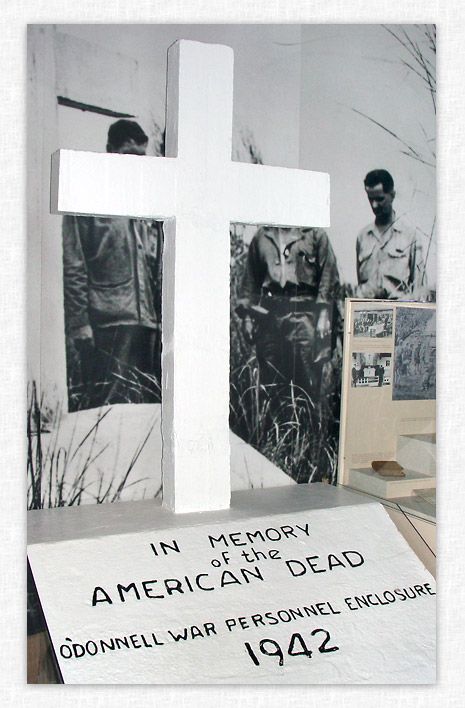 |
|
|
|
Post by Karl Welteke on Mar 19, 2012 12:13:36 GMT 8
Camp O’Donnell and the Cross were not always forgotten. Here is an interesting web page from the Officer in Charge Leroy E. Jones in 1970 to 1971. Some of the quotes and images are from his, this web site: www.leroyjonesnavyhistory.com/Capas.htmHere is his most interesting lead-in paragraph: How I came to be Officer in Charge of the Navy Radio Transmitting Facility, Capas My move to the position of Officer in Charge of the Navy Transmitting Facility came about because of a shoot out on the Base at Capas. There was a meeting in the Philippine Civilian club on the base including the Commander of the Philippine Constabulary, the Mayor of Capas, some of the civilian staff from the base and a few of the Navy personnel from the base. At some point three members of the HUC insurgency stormed into the club and sprayed automatic fire all over the club (a Quonset hut) killing the Commander of the PC, the Chief Master at Arms from the base and several others, the Mayor of Capas had a bullet in his head but survived and eventually recovered. The Officer in Charge supported and participated with a Clark Air Force Boy Scout Troop in The 28th Anniversary Re-enactment of the Bataan Death March These few images came from the web page Leroy E. Jones (above) but the web page has many more. Retracing the Death March 1971   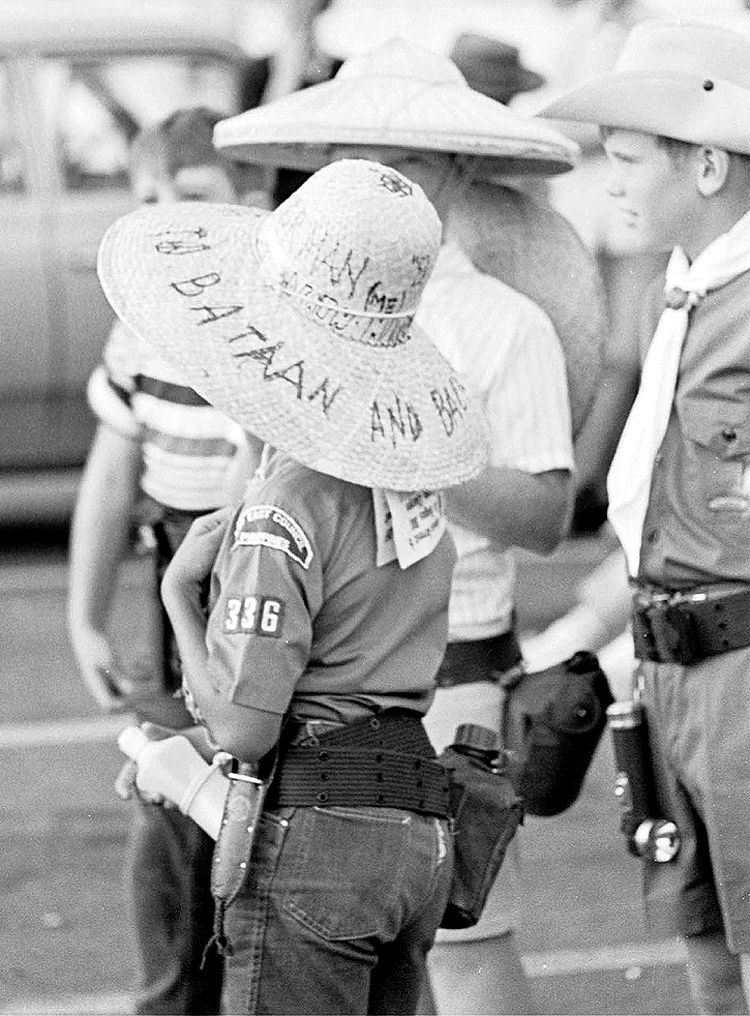 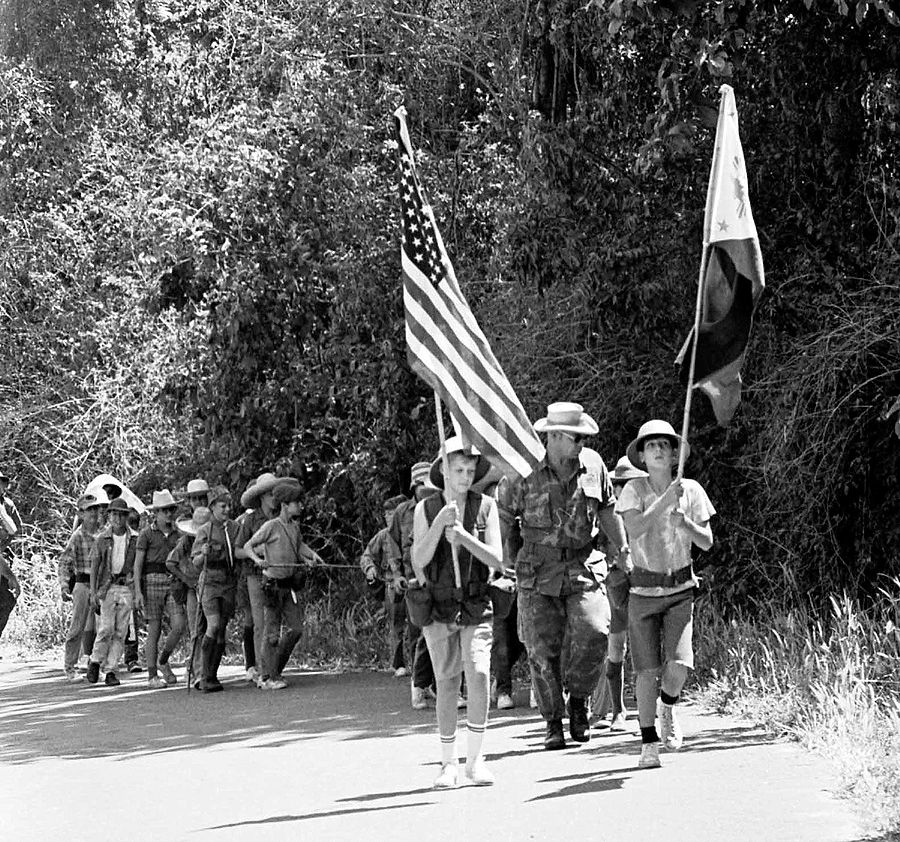 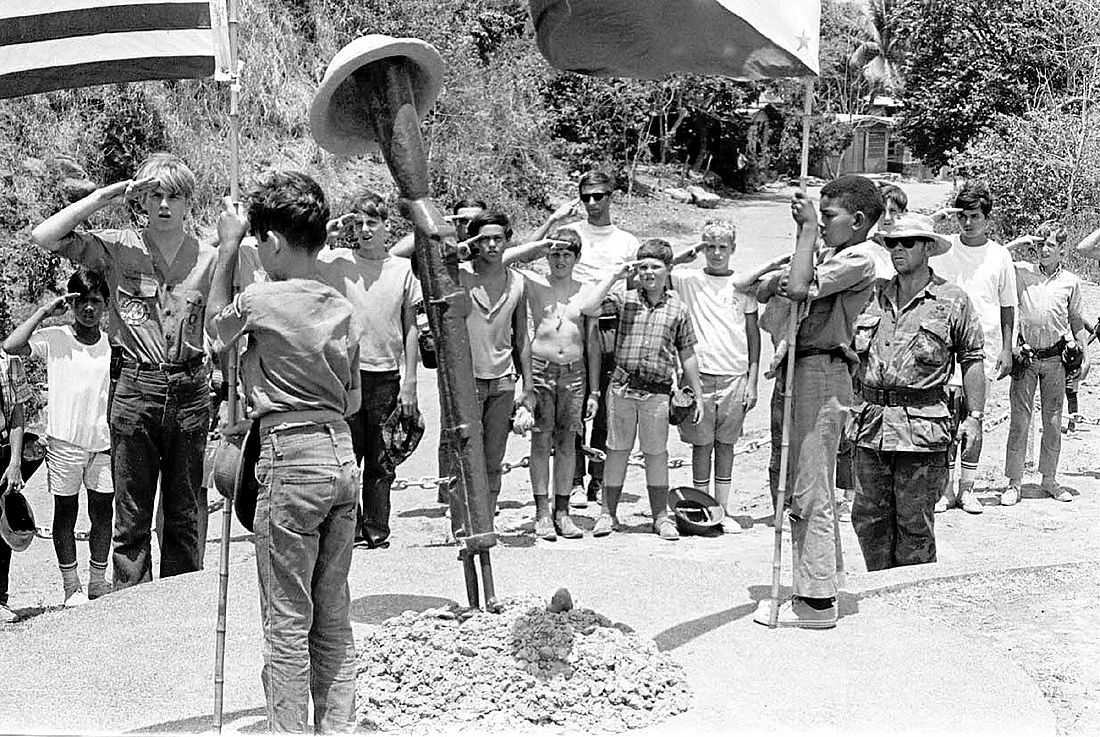  Capas RR Station 1971 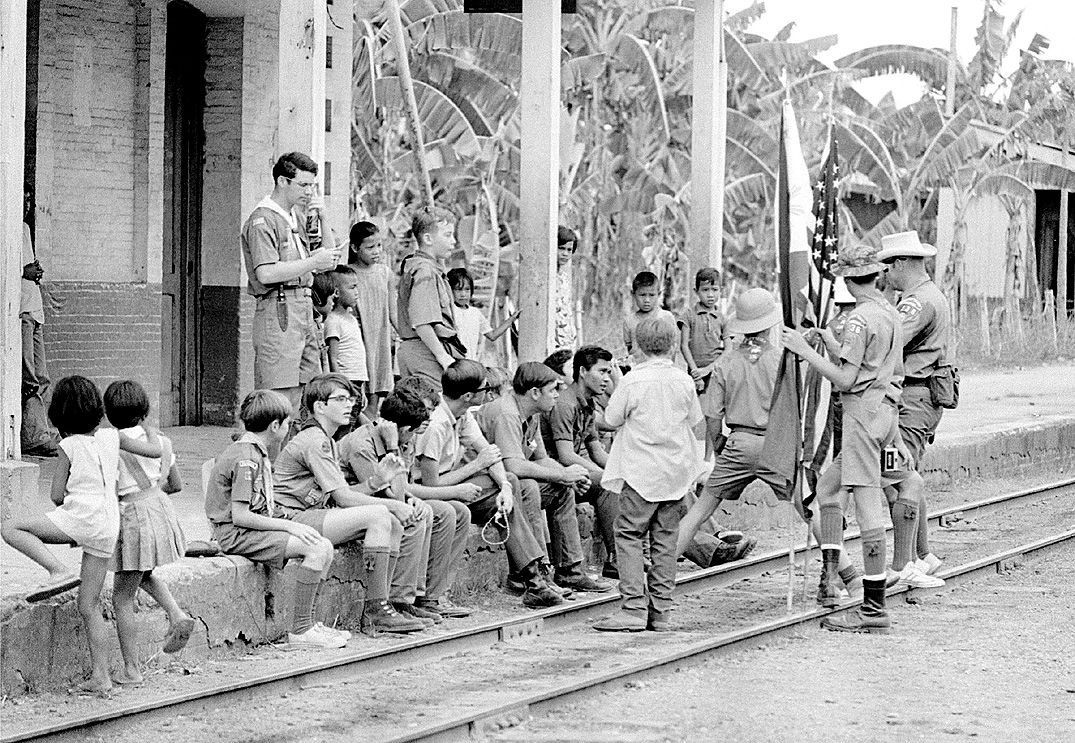 The Cross and ceremony 1971 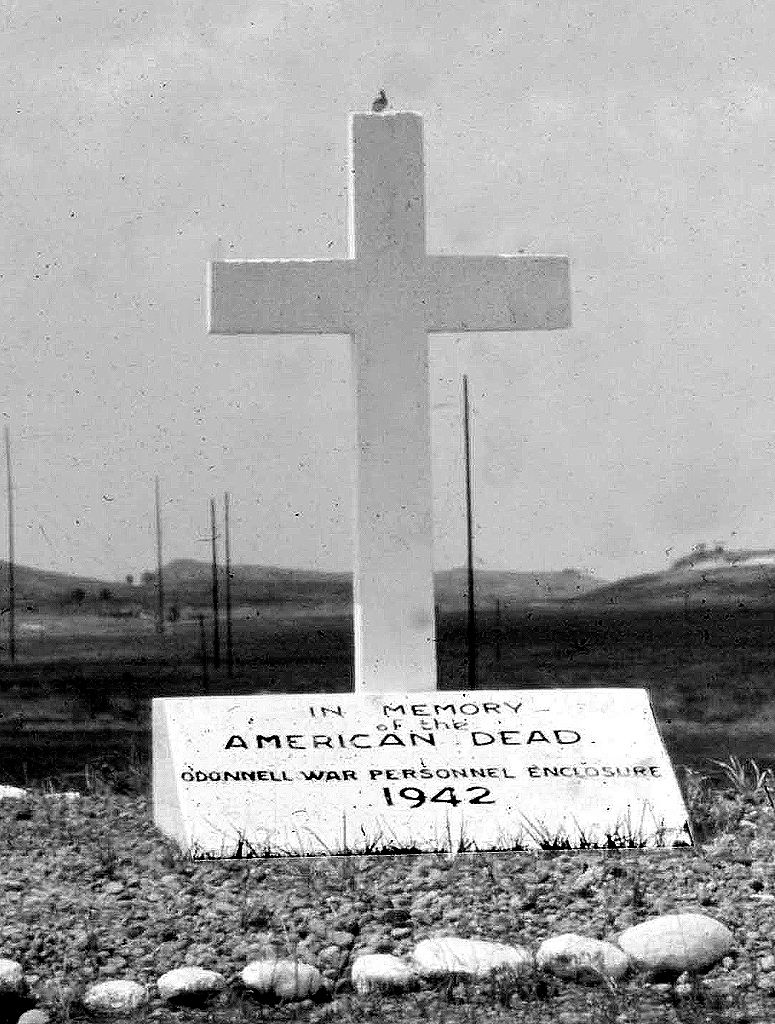 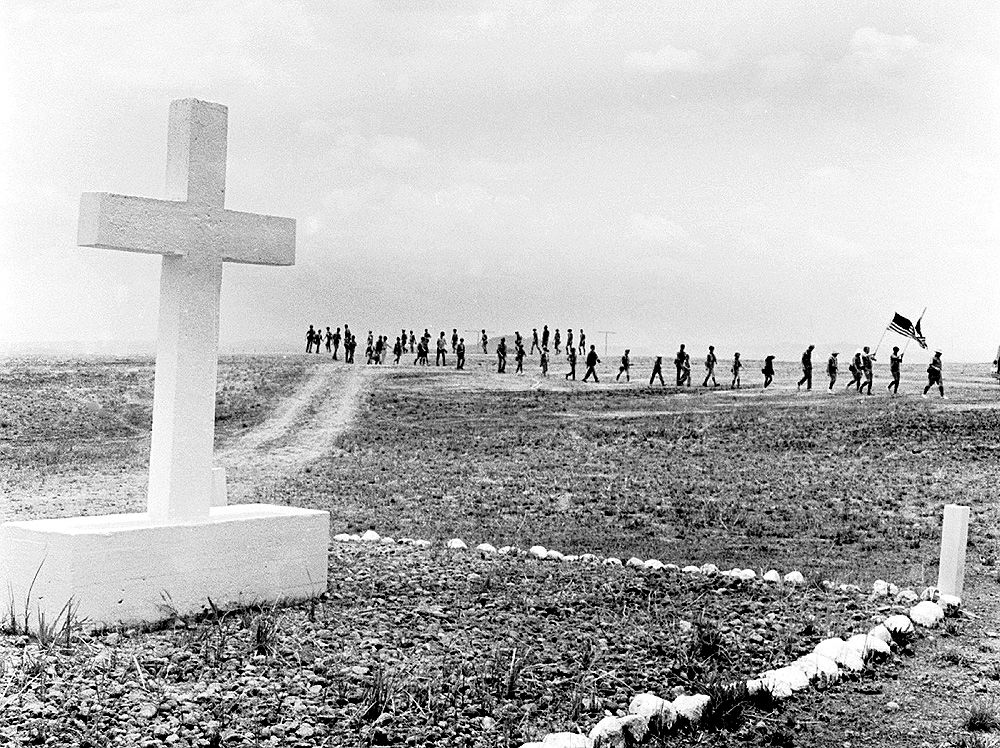 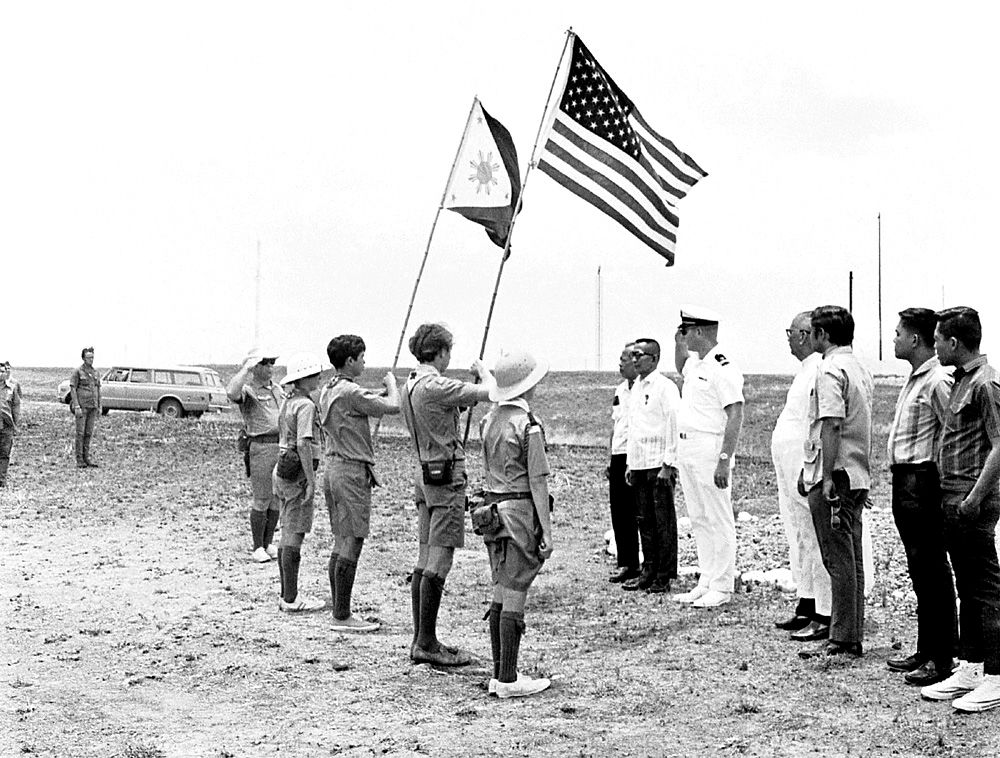 |
|
|
|
Post by okla on Mar 19, 2012 21:42:51 GMT 8
Hey Karl....Excellent stuff. Many thanks for posting. Cheers.
|
|
|
|
Post by sherwino on Mar 20, 2012 14:48:34 GMT 8
Does anyone here know or have some references about the names on the Battling Bastards memorial in Capas Tarlac? I saw two names which may be related to my family. Could have been my great great grandpa or great great grand uncle or great grand uncle. My great great grandfather was a foreman or supervisor in the Mariveles quarry before the war. I was told by my grandfather about that but I had not ask him his name. Too bad, I wasn't able to extract a lot of information from my grandfather before he kicked his bucket. The names on the wall are:
Monroe George H S/SGT
Monroe Joseph E PVT
Any info would be highly appreciated. Thanks.
|
|
|
|
Post by JohnEakin on Mar 21, 2012 1:54:51 GMT 8
The Camp O'Donnell burial roster contains the following information: MONROE GEORGE H S SGT 6946954 3rd Purs Sqdn 24th Purs Gp GRAVE ML-N-7-17 DATE OF DEATH 22-Jun-42 MONROE JOSEPH E PVT 6262354 Hq & Hq Sqdn 24th Purs Gp GRAVE ML-L-3-126 DATE OF DEATH 02-Jul-42 The ABMC database shows that they entered the service from PA and AR, respectively. I think there is also a database of WWII military enlistments some place on the web which might help you determine if these guys are your family. The place to start to obtain more information about their service is the Army Casualty Office www.hrc.army.mil/TAGD/Past%20Conflict%20Repatriations%20Branch%20PCRB%20Mission%20StatementAsk them to provide their Individual Deceased Personnel Files (IDPF). |
|
|
|
Post by sherwino on Mar 21, 2012 7:43:23 GMT 8
Thank you very much, John.
|
|
|
|
Post by JohnEakin on Mar 21, 2012 8:56:17 GMT 8
Let us know what you find out. Even if they turn out to not be your family, they all have a story that deserves to be remembered.
|
|
|
|
Post by Karl Welteke on Mar 21, 2012 15:04:29 GMT 8
Most of us know of or have heard of Col. John Eric Olson. He was an officer of the Philippine Scouts, marched the Death March to Camp O’Donnell. He done much to keep the memory of the Death March and the Death Camp O’Donnell alive. He has written books about that experience and the History of the Philippine Scouts. About him is this page in Wikipedia: en.wikipedia.org/wiki/John_E._OlsonHis son Randy Olson who is a film maker, is apparently working on a new film project about Camp O’Donnell. The former Officer in Charge (OIC) Leroy E. Jones of the Navy Radio Transmitting Facility (NRTF) Capas 1970-71 who the above images came from and who has this web page about NRTF Capas, the former Death Camp www.leroyjonesnavyhistory.com/Capas.htmrecently wrote me this about Randy Olson: Karl, It is interesting you discovered the website and contacted me at this particular time. I have no objection to you using any of the photos or material from my website. I posted it for just that purpose. In mid April I am scheduled to meet with Randy Olson in Richmond, VA to be interviewed about the cross in the antenna field at NRTF, Capas. He is working on a film project about Camp O’Donnell. His dad was on the Death March and was a POW at Camp O’Donnell which was the site for NRTF, Capas, Randy Olson seems to think I revived interest in the cross while Officer in Charge there and wants to interview me about that. I did get the cross cleaned up and participated in the 28th re-enactment of the Death March and arranged the ceremony at the cross a week after the re-enactment march. However, I think he gives me too much credit. He still wants to interview me just the same. The book written by Randy’s dad, John E. Olson is "O’Donnell, Andersonville of the Pacific". I recommend you read his account of the Death Camp. I am reading a number of books about Camp O’Donnell at this time in preparation for the interview. There are a lot of books on the subject. Fr. Penada was Capas Priest when I was there and I enjoyed many a visit from him at the base. If he is still alive you might be able to meet him and learn a lot about the history of the Death Camp. He was there and knows it first hand. If you do meet with him I would appreciate any information you can provide to me. I consider him an old friend even though we knew each other for a short time. I would love to be in contact with him again. I’m sure you are aware that the cross has been moved from the antenna field at the old NRTF to Andersonville, GA POW Museum. It was Col. John Olson who engineered the moving of the cross. Here are a few images of Fr. Penada  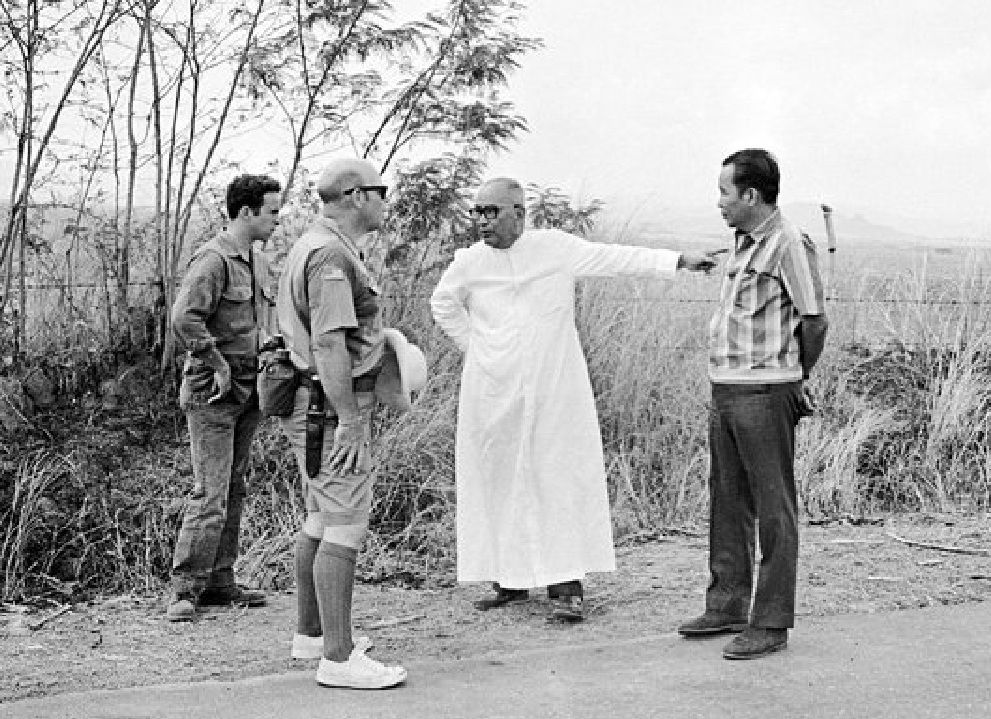  In the above web page of the OIC NRTF Capas, Leroy E. Jones, has this paragraph included about Fr. Penada: Included is a slide show of Fr. Penada who was a Chaplain in the Philippine Army and was not interred in the Death Camp. He was allowed to go into and leave the Death Camp and was able to take messages to and from the prisoners and some medications. In order to have these privileges he played ping pong with the Japanese Base Commander... and allowed him to win. He stood with me in the antenna field and pointed out the locations of the various parts of the Death Camp. |
|
























